What’s the Difference? is a series of lighting tutorials. Each articleresponds to a single question. In this post, Jared Platt explains the difference between a white and a silver beauty dish.
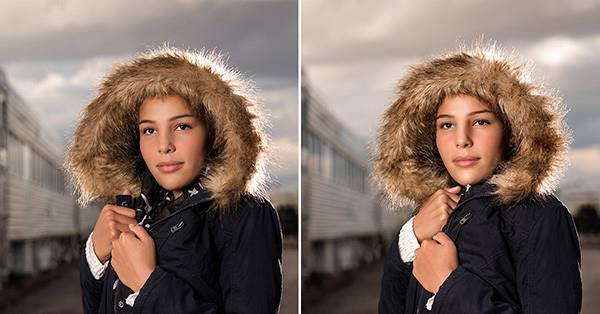
In my last post, I showed you the difference between a bare head flash and a white beauty dish. A beauty dish creates a directional, but soft light by increasing the relative size of the light and by blocking the original light source and forcing the light to spread evenly around the entire modifier. You probably already know that the relative size of your light determines how soft the light will be, but there are other factors that change the quality of that light. One of those additional factors is the surface of the light modifier itself.
A soft white surface will refract the light in multiple directions, so that the light from the left side of the beauty dish not only travels straight to the subject, but also heads to the right and fills in any of the shadow created by the light traveling directly from the right side of the beauty dish and vice versa. As a result, the light hitting the subject is much softer, with subtler transitions between highlight and shadow.
In the first image, we used the Profoto OCF White Beauty Dish on a Profoto B1 Off Camera Light and the result is what you would expect out of a beauty dish. You can see the direction of light, but due to the size of the light and the refractive white surface, the shadow transitions are soft.
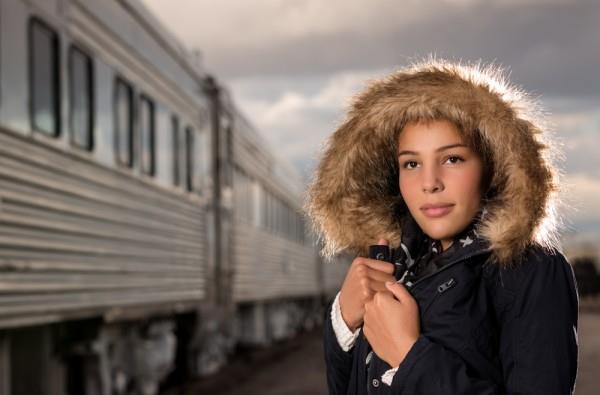
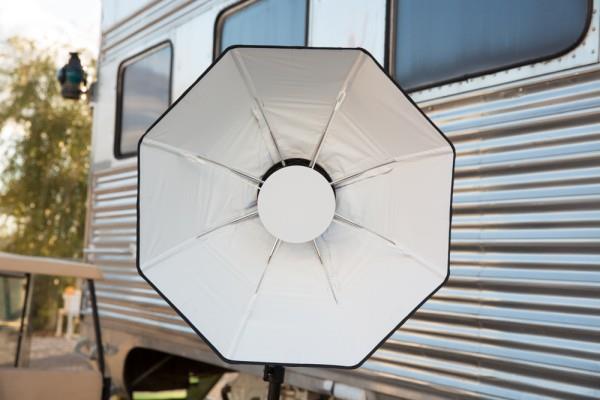
We also added a B1 head with a Zoom Reflector behind the model to create a hair light and help separate her from the background and mimic the sun. In addition to the hair light, we added another B1 head with a Zoom Reflector and a 10 degree grid to add a very minimal light focused on the models coat because it was a bit too dark. But the main light that is illuminating her face, hands and the hood of the coat looks the way it does because of the nature of the white beauty dish.

But what happens to the shot when all we change is the surface of the beauty dish from white to silver?
The comparison
With no change in size, but a change in the refractive nature of the surface, you will see distinct difference in the highlights on the model’s face, the sparkle in her eyes and the detail in the fur around the hood of her coat. Why?
The shinny surface of a silver beauty dish reflects the same light in one very definitive direction, rather than reflecting the light in multiple directions.

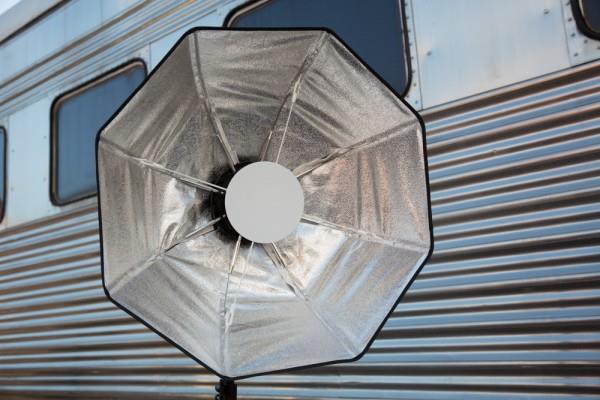
This means that the light is traveling directly toward the subject, on a micro level, will create slightly harder shadows. Those micro shadows in areas like hair will create texture. That precise direction of light on the skin will create brighter specular highlights and intense color and in eyes will create more sparkle. You can see this in effect in the second image where we swapped out the white beauty dish for the Profoto OCF Silver Beauty Dish. Pay close attention to the added texture in the fur on the coat hood, see the extra sparkle in the model’s eyes and watch for the extra glow on her skin in the highlights. Her lips have a richer red as well.
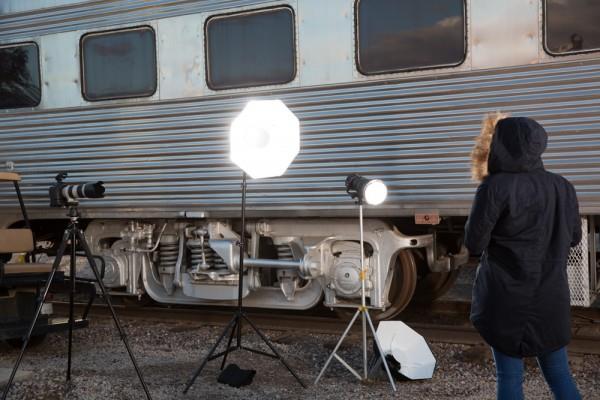
Using the slider at the top of this post will help in comparing the two effects. Seeing the two images on their own might make it more difficult to see the difference, in fact most photographers will have a hard time identifying the use of a silver vs. a white beauty dish, even though they may have a preference toward one or the other.
The conclusion
This is the reason I have created the What’s the Difference series with such meticulousness: so you can see even the most subtle differences in various light shaping tools. In this instance, spend some time and get a good feel for the difference between the two modifiers and identify the lighting style you prefer. That will be your “go to” beauty dish. But there are reasons to have both in your arsenal.

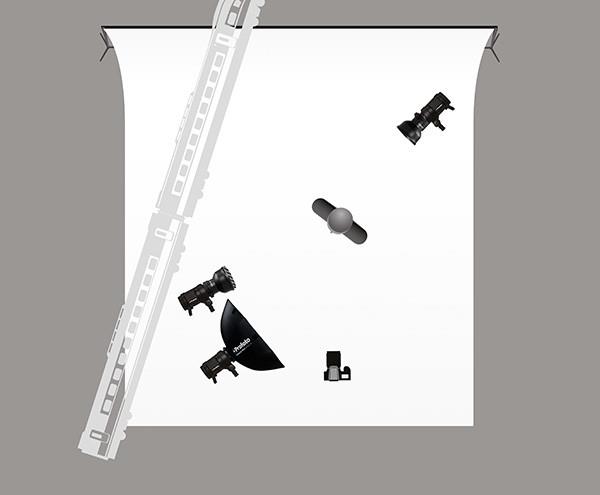
While the white beauty dish is my favorite of the two surfaces, the silver is extremely useful in a bright outdoor circumstance where I need more flash power. The silver surface will reflect more light than the white surface, almost a stop more. This is a very compelling reason to have a silver beauty dish in your equipment bag. In the end, both the silver and the white beauty dish produce a similarly directional and soft light because the size is the same, but the reflective quality will make a subtle difference between the two. Basicly, the silver beauty dish will create more volume in your subject than the white beauty dish will. That’s not to say that a white beauty dish flattens an image, it just creates less volume than the silver surface does.
I have the Profoto 20 inch Soft White Beauty Dish, which is fantastic, but it is also metal, so it requires a lot of space to travel. The brilliance of the Profoto OCF Silver and White Beauty Dishes are their low profile. The size of the light and the quality of the surface provide a beautiful soft light in a small package that is easy to maneuver and the light weight and collapsibility make for easy travel.
Decide on a surface based on the look you prefer and your special needs. If you are shooting outside most of the time, you might consider the silver surface. If you are shooting women who need a softer look, start with the white surface. Either way, you’re going to get a beautiful directional light from a beauty dish.
The gear
3 x B1 Off-Camera Flash
1 x Zoom Reflector with grid
1 x OCF Beauty Dish White 2′
1 x OCF Beauty Dish Silver 2′
1 x OCF Speedring
1 x Air Remote TTL-C

